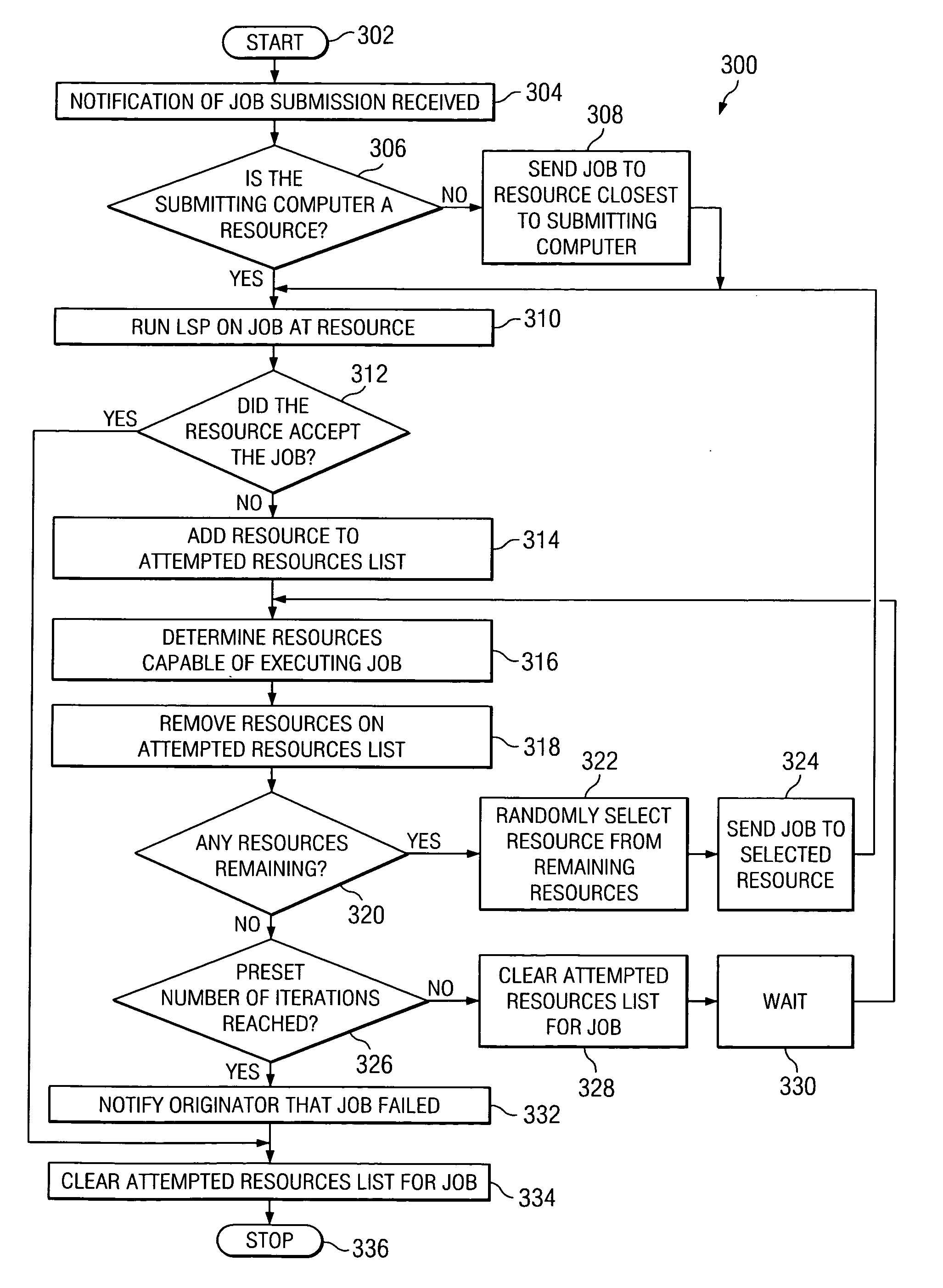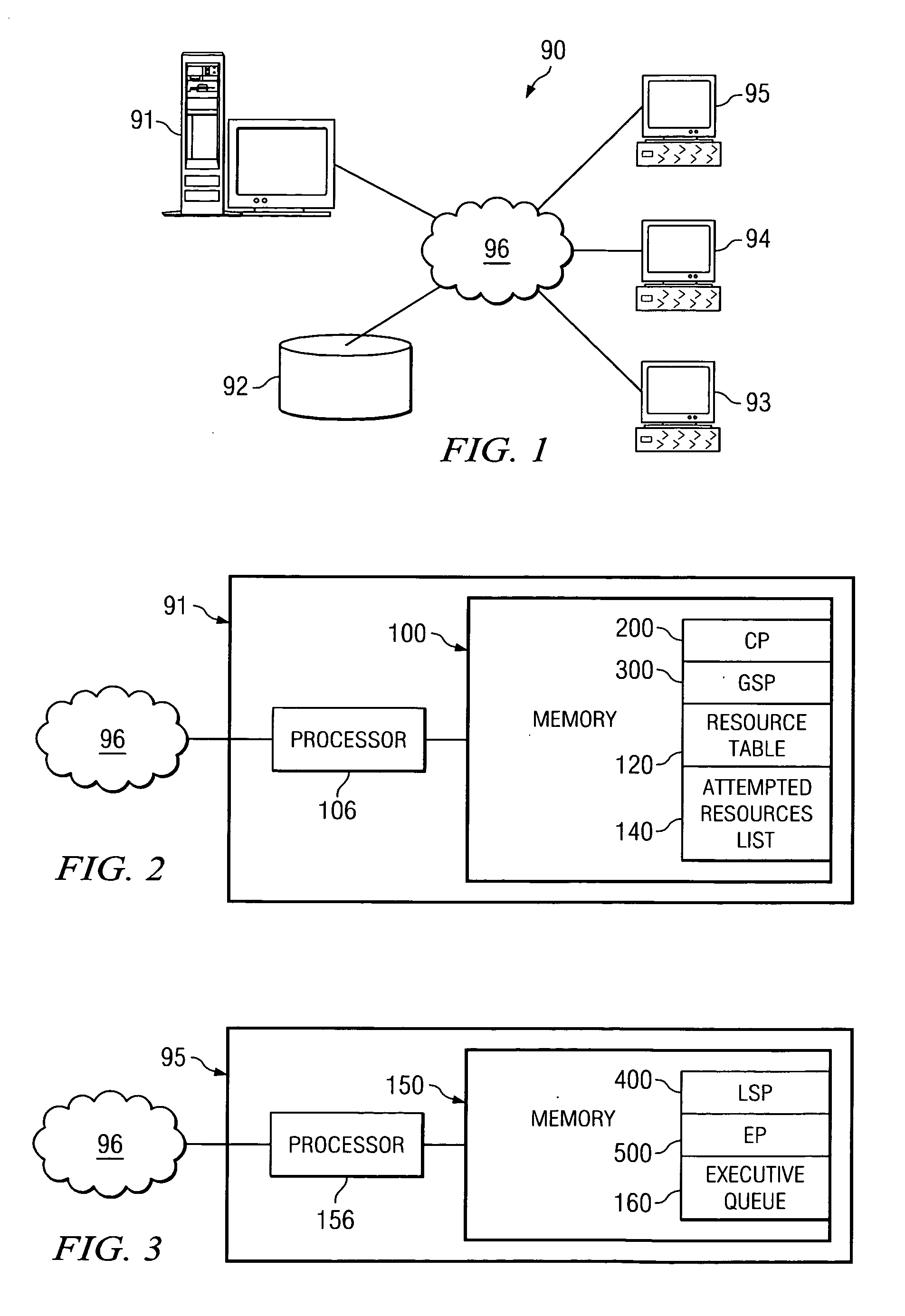Grid non-deterministic job scheduling
- Summary
- Abstract
- Description
- Claims
- Application Information
AI Technical Summary
Benefits of technology
Problems solved by technology
Method used
Image
Examples
Embodiment Construction
[0019] As used herein, the term “accept” shall mean for a resource to have sufficient processing capability, memory, and other attributes to execute a job and for the resource to agree to execute a job.
[0020] As used herein, the term “analyze” shall mean to examine a resource and the resource properties.
[0021] As used herein, the term “attempted resources list” shall mean a list of resources that have rejected a job.
[0022] As used herein, the term “computer” shall mean a machine having a processor, a memory, and an operating system, capable of interaction with a user or other computer, and shall include without limitation desktop computers, notebook computers, personal digital assistants (PDAs), servers, handheld computers, tablet computers, and similar devices.
[0023] As used herein, the term “execute” shall mean to process a job into a finished result.
[0024] As used herein, the term “execution queue” shall mean a list of jobs that are awaiting execution at a single resource.
[...
PUM
 Login to View More
Login to View More Abstract
Description
Claims
Application Information
 Login to View More
Login to View More - R&D
- Intellectual Property
- Life Sciences
- Materials
- Tech Scout
- Unparalleled Data Quality
- Higher Quality Content
- 60% Fewer Hallucinations
Browse by: Latest US Patents, China's latest patents, Technical Efficacy Thesaurus, Application Domain, Technology Topic, Popular Technical Reports.
© 2025 PatSnap. All rights reserved.Legal|Privacy policy|Modern Slavery Act Transparency Statement|Sitemap|About US| Contact US: help@patsnap.com



